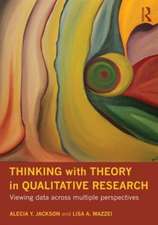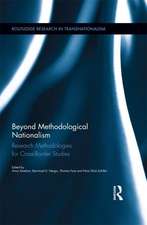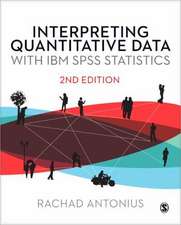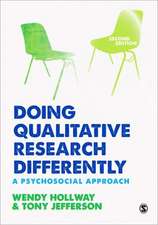Methods for Identifying Biased Test Items: Measurement Methods for the Social Science, cartea 4
Autor Gregory Camilli, Lorrie Sheparden Limba Engleză Paperback – 24 mai 1994
Preț: 716.25 lei
Preț vechi: 873.47 lei
-18% Nou
Puncte Express: 1074
Preț estimativ în valută:
137.07€ • 142.58$ • 113.16£
137.07€ • 142.58$ • 113.16£
Carte tipărită la comandă
Livrare economică 14-28 aprilie
Preluare comenzi: 021 569.72.76
Specificații
ISBN-13: 9780803944169
ISBN-10: 0803944160
Pagini: 181
Dimensiuni: 155 x 213 x 12 mm
Greutate: 0.27 kg
Ediția:First Edition
Editura: SAGE Publications
Colecția Sage Publications, Inc
Seria Measurement Methods for the Social Science
Locul publicării:Thousand Oaks, United States
ISBN-10: 0803944160
Pagini: 181
Dimensiuni: 155 x 213 x 12 mm
Greutate: 0.27 kg
Ediția:First Edition
Editura: SAGE Publications
Colecția Sage Publications, Inc
Seria Measurement Methods for the Social Science
Locul publicării:Thousand Oaks, United States
Cuprins
Introduction
Test Bias, Item Bias, and Test Validity
Early Item Bias Indices Based on Classical Test Theory and Analysis of Variance
Item Response Theory as Applied to Differential Item Functioning
Contingency Table Approaches
Interpretations of Bias from DIF Statistics
Conclusions and Caveats
Test Bias, Item Bias, and Test Validity
Early Item Bias Indices Based on Classical Test Theory and Analysis of Variance
Item Response Theory as Applied to Differential Item Functioning
Contingency Table Approaches
Interpretations of Bias from DIF Statistics
Conclusions and Caveats
Descriere
This book makes clear to researchers what item-bias methods can (and cannot) do, how they work and how they should be interpreted.
Advice is provided on the most useful methods for particular test situations. The authors explain the logic of each method - from item-response theory to nonparametric, categorical methods - in terms of how differential item functioning (DIF) is defined by the method and how well the method can be expected to work. A summary of findings on the behaviour of indices in empirical studies is included. The book concludes with a set of principles for deciding when DIF should be interpreted as evidence of bias.




















